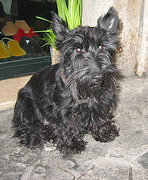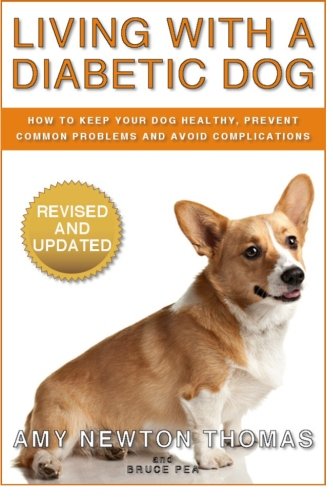Games That Are Not Good For Your Dog
Certain games are dangerous and encourages dominant behaviour of a dog. Here I will share a few common games which are not appropriate if you do not want your dog to misbehave unnecessarily.
1. Wrestling and Tug-Of-War
This games are fine for dogs but not for us. Very often we see that the puppies like to play wrestling among their littermates which is fine. However, we might get hurt if we play with them too roughly. We need to let our dogs know that we we're people, not littermates, and should be treated with respect. Playing these games can give some dogs the mistaken idea that the toughest player wins and shall be the pack leader. It is not good for your dog to believe they are higher in the pack hierarchy than any family member. This game also may make a possessive or aggressive dog worse. Games that encourage the dog to growl and bite are risky and may confuse him. It's hard for a dog to understand that sometimes it's okay for him to be aggressive and sometimes it's not.
2. Chasing Game
Quite often we like to play with our dog by letting them chasing us or our children. This may be quite dangerous because chasing may bring out the predator instincts in a dog, and even nipping at once's feet and causing you to fall.
3. Teasing With Toys/Food
Do not use any item to tease the dog and try to make him jump again and again. Quite often I notice we like to use rags or cloth to tease a puppy and make him jump. It's not appropriate because this can lead to undesired behaviours and making the dog aggressive and rough if he can't get what he wanted.
*Bad Toy*
Quite often we see puppy or even adult dog going after our old shoe, glove, socks. Do not let them have the habbit to bite on those item as they may mistaken that it is ok to bite on other household item.
Right Owner's Attitude
I would like to elaborate a bit on owner's right attitude towards a dog. A dog's behaviour is very much depends on how we teach, train and present ourself to them. Those who have watched the Dog's Whisperer by Cesar Millan (http://www.cesarmillaninc.com) before, will understand what I mean.
Very often, you will find Cesar teaching the owner how to change their behaviour towards their pet, instead of the other way round. This shows how important we are as the owner, to build the right image for our dog.
Attitude 1: Leadership
You are the master and act like one. This is equally detrimental to your relationship with the animal as the animal has no control to its behaviors and can quickly become a danger to itself and others. Dogs are pack animals and quickly decide who the leader is and who follows. If you do not take the leadership role from the beginning, your pet will. A dog without a master is with no control and become very dangerous to other animals and our neighbours.
Attitude 2: Patience
Training a dog takes a lot of effort, time and patience. Both you and the dog will fail if you lose your temper. Yelling at your pet or hitting is always wrong. A firm tone to stop an undesired behaviour like, "eih" is good enough.
Attitude 3: Spirit of 'Never Give Up'
Many dog owner has a pet that has never reached its full potential due to the owner losing interest in their training. Dogs love to learn, especially when the owner rewards well learned behavior traits. Many owners, lacking the time or perhaps the patience, will be quite happy to have a pet that merely answers to its name and stops barking when repeatedly shouted at. Please do not let yourself fall into this trap. Your pet is a highly intelligent animal and is capable of learning so much more. Occasionally, dogs have even been known to develop neuroses due to boredom from not being challenged enough. This results in an unhealthy animal that can be poorly socialized and destructive of furnishings or even its own body. Your dog can and will respond to your training efforts if given the time to do so.
Attitude 4: Consistency
It's very important to use the same command to train your dog. Inform each family member if they also involve in the training. Do not confuse your dog with different command language. Also, if you train your pet to sit and it doesn't do it, stick with it until they do. Dogs learn things by routine. Do it again and again until he gets it right and reward him with some play time or some verbal praise for properly performing the routine. Consistency is the major key to training your pet. Repetitive lessons taught on a regular basis with consistent rewards are necessary to the effective training of your pet.

 Dangers of “Free to Good Home” ads
Dangers of “Free to Good Hom
Dangers of “Free to Good Home” ads
Dangers of “Free to Good Hom
 Scottish Terrier Breeder Interview: Cindy Cooke Tells Us About Scotties
Scottish Terrier Breeder Interview
Cindy Cooke has been wor
Scottish Terrier Breeder Interview: Cindy Cooke Tells Us About Scotties
Scottish Terrier Breeder Interview
Cindy Cooke has been wor
 Raw Food Diet for Dogs
Raw Food Diet for Dogs: the
Raw Food Diet for Dogs
Raw Food Diet for Dogs: the
 What to Do about Fleas on Dogs
One or two fleas found on yo
What to Do about Fleas on Dogs
One or two fleas found on yo
 Canine Diabetes
Despite diabetes being commo
Canine Diabetes
Despite diabetes being commo